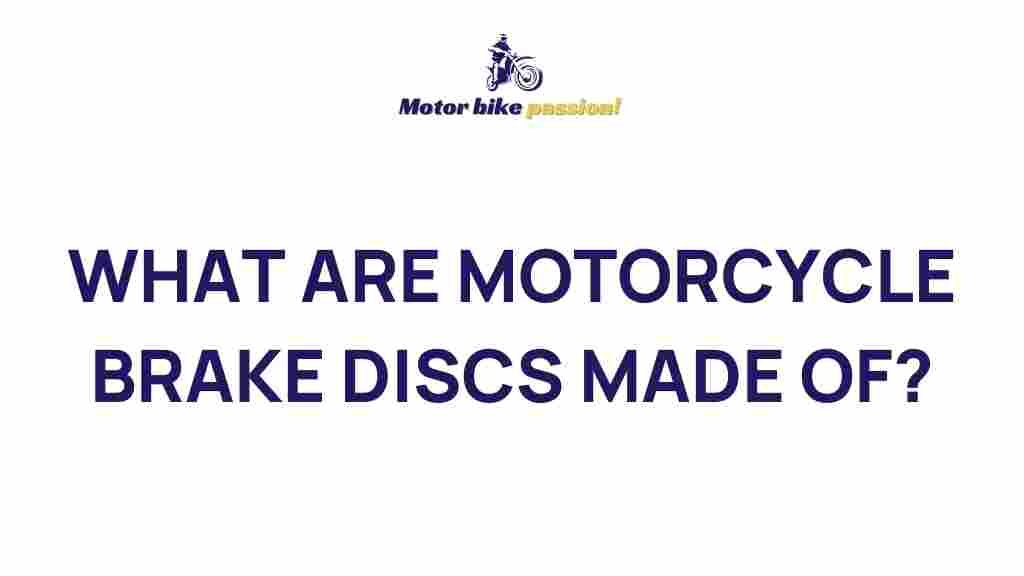Understanding Motorcycle Brake Discs
The **motorcycle** brake disc is a critical component in ensuring safe and reliable stopping power. While most riders focus on speed and engine performance, the braking system is equally vital in maintaining control. In this article, we delve into the intricacies of brake discs, offering valuable insights into their operation, maintenance, and troubleshooting.
What Are Motorcycle Brake Discs?
Motorcycle brake discs, also known as rotors, are circular components attached to the wheels of a motorcycle. They work in conjunction with brake pads and calipers to slow down or stop the bike. When the brake lever or pedal is engaged, the pads press against the rotating disc, creating friction and reducing the wheel’s motion.
Key Features of Motorcycle Brake Discs
- Material: Typically made from steel or composite materials for durability and heat resistance.
- Design: Ventilated, perforated, or slotted designs to dissipate heat and improve performance.
- Size: Varies depending on the motorcycle type, affecting stopping power and responsiveness.
Brake discs are engineered to withstand high temperatures and extreme forces, making them essential for rider safety.
How to Maintain Motorcycle Brake Discs
Proper maintenance of your **motorcycle** brake discs ensures optimal performance and longevity. Below are the steps to keep them in pristine condition:
1. Regular Cleaning
Dirt, debris, and brake dust can accumulate on brake discs, reducing their effectiveness. Use a brake cleaner and a soft cloth to wipe the discs regularly.
- Avoid using harsh chemicals that can corrode the disc surface.
- Ensure the discs are completely dry before riding.
2. Check for Wear and Tear
Inspect the discs for signs of wear, such as grooves, warping, or discoloration. If you notice significant damage, replace the disc promptly to avoid compromised braking performance.
3. Monitor Brake Pad Alignment
Ensure that the brake pads are properly aligned with the disc. Misalignment can cause uneven wear and reduce the lifespan of the disc.
4. Torque the Bolts Correctly
Over-tightened or loose bolts can lead to disc warping. Always follow the manufacturer’s recommended torque settings when installing or maintaining brake discs.
Common Issues with Motorcycle Brake Discs
Despite proper care, brake discs can encounter issues that affect performance. Below are common problems and how to address them:
1. Warped Discs
Warping occurs due to excessive heat or uneven pressure. Symptoms include vibrations or a pulsating sensation when braking. To fix this issue:
- Ensure the calipers and pads are functioning correctly.
- Replace the disc if warping is severe.
2. Scoring or Grooving
Deep grooves on the disc surface result from debris or worn-out pads. To resolve:
- Replace damaged pads promptly.
- Resurface the disc if the grooves are not too deep.
3. Corrosion
Exposing the brake disc to moisture can lead to rust, which reduces braking efficiency. Prevent corrosion by keeping the bike in a dry environment and applying a protective coating to the disc.
Choosing the Right Brake Discs for Your Motorcycle
When selecting brake discs, consider the following factors:
- Compatibility: Ensure the disc matches your **motorcycle** model and specifications.
- Riding Style: Different discs are designed for street, off-road, or racing purposes.
- Quality: Opt for trusted brands to guarantee durability and performance.
For more detailed guidance, check out our comprehensive motorcycle brake guide.
Step-by-Step Guide to Replacing Motorcycle Brake Discs
If your brake discs are worn out or damaged, replacing them is essential. Here’s how to do it:
1. Gather the Necessary Tools
You will need a socket wrench, a torque wrench, and new brake discs compatible with your **motorcycle** model.
2. Remove the Wheel
Loosen the axle nut and remove the wheel from the bike. Ensure the bike is securely supported on a stand.
3. Detach the Old Disc
Unbolt the old disc using a socket wrench. Be careful not to strip the bolts during removal.
4. Install the New Disc
Align the new disc with the bolt holes on the wheel. Tighten the bolts evenly using the torque wrench to the manufacturer’s specifications.
5. Reinstall the Wheel
Attach the wheel back to the **motorcycle**, ensuring it is properly aligned and secure. Test the brake system before riding.
Troubleshooting Tips for Motorcycle Brake Discs
Even after following maintenance and replacement steps, you may encounter issues. Here are troubleshooting tips:
- Soft Brakes: Bleed the brake lines to remove air bubbles.
- Noisy Braking: Check for glazed pads or uneven disc surfaces.
- Reduced Stopping Power: Ensure the calipers are functioning and pads have sufficient material.
When in doubt, consult a professional mechanic for a thorough inspection.
Conclusion
The **motorcycle** brake disc is a vital component that directly impacts your safety and riding experience. By understanding its functions, maintaining it properly, and addressing common issues, you can enjoy a smoother and safer ride. Always prioritize high-quality components and regular inspections to keep your bike in top condition.
For additional tips on maintaining your bike, visit our motorcycle maintenance page or check out external resources like Motorcycle.com for expert advice.
This article is in the category Maintenance Tips and created by MotorBikePassion Team

2 thoughts on “Unveiling the Secrets of Motorcycle Brake Discs”